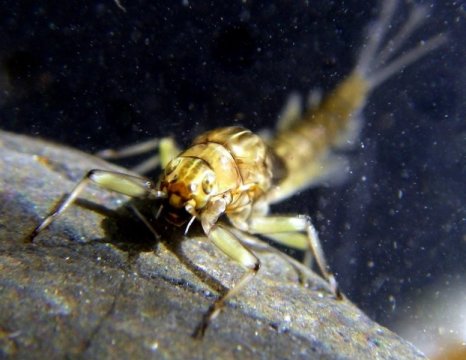[ad_1]
Caddisflies, crustaceans, mollusks and flatworms. Those are just a few of the curious creatures known as benthic (bottom-dwelling) invertebrates and commonly found in small streams. Fingernail clams and oligochaetes are part of the menagerie, too.
Their individual names aside, UC Santa Barbara stream ecologist David Herbst affectionately calls them all “little monsters.” Indeed, with the wide-set eyes, cavernous mouths and wily antennae on some of them, they could easily be the stuff of horror films.
For Herbst, though, the “little monsters” he observes in the open-air laboratories of the Eastern Sierra Nevada are an indicator of the health of the greater food web. And his new research, recently published in the journal Hydrobiologia, illuminates the connection between benthic invertebrates and the movement of the water in which they live.
“As water flows down from mountains it does not follow a straight path,” said Herbst, a research scientist with UCSB’s Marine Science Institute (MSI). “It both meanders side to side and undulates from shallow to deep. It picks up and puts down what is on the stream bottom, receives what comes off the land and carries downstream what it can, leaving behind what is more than it can lift. These flows and forces form characteristic habitats of shallow riffles in rocky turbulent zones and deeper pools where deposits of debris and sediments often accumulate.”
The new research, Herbst added, shows that the same processes behind those riffles and pools also sort and select for differing assemblages of stream life.
“Benthic macroinvertebrates, mainly the larval or immature stages of aquatic insects, number in the hundreds of species in the Sierra Nevada,” said Herbst, who has studied the ecology of mountain streams for some 20 years from his laboratory at UCSB’s Sierra Nevada Aquatic Research Laboratory in Mammoth Lakes, part of the UC Natural Reserve System. “Our study puts a spotlight on the differences between the most basic habitat dichotomy of streams — riffles and pools — and gives us a clearer understanding of how the diverse forms of bottom-dwelling invertebrate life sort out between them and also change with stream water flow.”
In essence, according to Herbst, the research conducted on the U.S. Forest Service’s Kings River Experimental Watershed found that stream systems are far more dynamic in nature, and change more frequently with time and flow, than once thought.
“It also shows us that we had a lot to learn about such a fundamental aspect of the stream environment because almost half of the species we studied did not live where we had previously supposed they did,” he said.
Herbst collaborated on the research with UCSB’s Scott D. Cooper, of both MSI and the Department of Ecology, Evolution and Marine Biology (EEMB), R. Bruce Medhurst of MSI and Sheila W. Wiseman of EEMB, as well as U.S. Forest Service ecologist Carolyn T. Hunsaker. Together the scientists hope their observations and findings will serve to deepen human understanding of how streams and the lifeforms that live within those waterways function.
In particular, Herbst said, knowing more about where the invertebrates establish habitats and how they flourish (or not) in those areas of a given stream will lend key insights to the true impact of water pollution.
Currently, most water quality monitoring programs sample benthic invertebrates in an approach that combines both riffle and pool habitats, according to Herbst, who said his team’s research makes possible a more precise, informative process for scientists and water quality regulators alike.
“Although this approach gives an appraisal of the entire stream, we now know that the proportions of these habitats can change over time and certainly between sites,” Herbst said. “Assessments intended to evaluate pollutant impacts or status of ecological health of water bodies may instead simply be a reflection of differences in the relative cover of these two major habitat types.”
Story Source:
Materials provided by University of California – Santa Barbara. Original written by Jeff Mitchell. Note: Content may be edited for style and length.
[ad_2]















